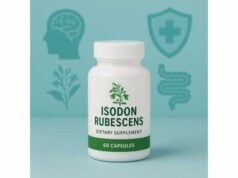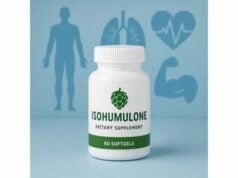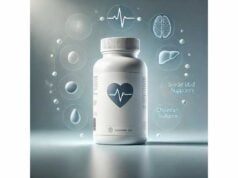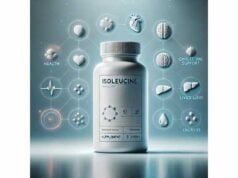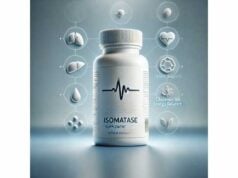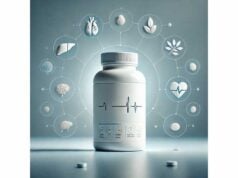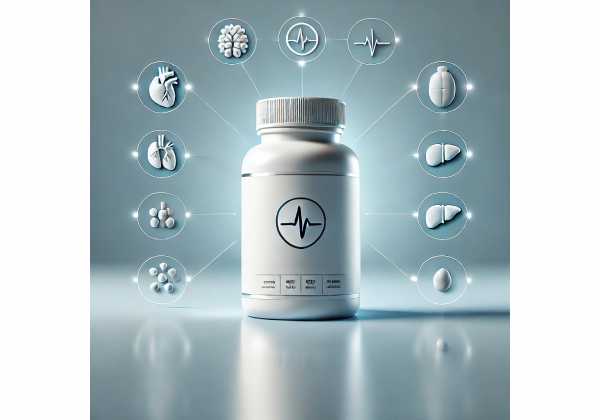
Isoliquiritigenin (ILG) is a bright-yellow chalcone naturally occurring in licorice roots (Glycyrrhiza species) and a few other plants. It has attracted attention for its antioxidant and anti-inflammatory actions, its ability to modulate cellular stress pathways like Nrf2 and NF-κB, and wide-ranging preclinical findings in cardiometabolic, neurological, and oncology models. Early human data are limited, but interest is growing as purified ILG becomes available in supplements and as a research compound. This guide distills what ILG is, where the evidence stands, how people use it, potential benefits and limitations, how to approach dosing in the real world, and who should avoid it. You will also find practical tips to assess product quality and pair ILG sensibly with diet and lifestyle, so you can make an informed, safety-first decision.
Key Insights
- Antioxidant and anti-inflammatory actions via Nrf2 activation and NF-κB down-regulation support potential roles in metabolic, vascular, and neuroprotective contexts.
- Human evidence remains sparse; most benefits are from preclinical studies, with one small clinical study suggesting effects on colonic motility.
- Practical supplemental ranges: 25–200 mg per day, starting at 25–50 mg and titrating cautiously; no established therapeutic dose.
- Safety: limited human data; possible hormonal activity; avoid in pregnancy and breastfeeding; monitor with anticoagulants or hormone-sensitive conditions.
Table of Contents
- What is isoliquiritigenin?
- Does it work and what benefits are backed?
- How to use it: forms and smart combinations
- How much isoliquiritigenin per day?
- Safety, side effects, and interactions
- What the evidence really says (a practical synthesis)
What is isoliquiritigenin?
Isoliquiritigenin (often abbreviated ILG or ISL) is a plant-derived chalcone—a type of polyphenolic compound structurally related to flavonoids but lacking the typical flavan ring closure. In nature, it’s most abundant in the roots of licorice (Glycyrrhiza glabra, G. uralensis, and related species), where it co-exists with other familiar constituents such as glycyrrhizin, liquiritin, and liquiritigenin. Unlike glycyrrhizin—which is responsible for licorice’s mineralocorticoid-like side effects—isoliquiritigenin does not share those salt-retaining properties. That biochemical distinction matters for safety and for how consumers think about “licorice” more broadly.
Chemically, ILG is 2′,4,4′-trihydroxychalcone, a small molecule with conjugated double bonds that confer its vivid color and capacity to scavenge reactive oxygen species (ROS). Beyond direct antioxidant effects, ILG engages stress-response pathways in cells. Two recurrent themes in the laboratory literature are: (1) activation of the Nrf2 (nuclear factor erythroid 2–related factor 2) pathway, which upregulates cytoprotective enzymes involved in redox balance and detoxification; and (2) down-regulation of pro-inflammatory signaling such as NF-κB, which can dampen cytokine production and inflammatory cascades. These mechanisms provide a plausible basis for wide-ranging, tissue-level effects observed in animal and cell studies, from improved endothelial function to neuroprotection in injury models.
ILG’s pharmacokinetic profile is another practical consideration. In rodents, oral bioavailability is modest, with relatively rapid metabolism (notably glucuronidation) and distribution to liver, kidney, and heart. That suggests two implications for human use: first, doses that look potent in cells may not translate directly in vivo; second, formulations that improve solubility or slow metabolism (for example, lipid-based carriers) could meaningfully alter exposure. Supplement labels rarely declare pharmacokinetic characteristics, so informed consumers should understand that “milligrams on the bottle” is not the complete story.
It’s also helpful to distinguish ILG from closely related compounds. Liquiritigenin is a flavanone isomer with its own pharmacology; isoliquiritin is a glycoside whose sugar moiety changes absorption and activity. Some traditional herbal formulas include whole licorice root, where these molecules act together. Purified ILG behaves differently than whole-root extracts not only in potency but potentially in safety, since it lacks glycyrrhizin but may show mild estrogenic or dopaminergic interactions in certain experimental systems. In modern practice, ILG appears both as a standalone ingredient and within multi-ingredient blends targeting oxidative stress, metabolic health, or cognitive performance.
Finally, context matters. Antioxidant and anti-inflammatory compounds are not panaceas; they are tools that can support cellular resilience under specific types of stress. ILG is best thought of as a modulatory nutrient-like compound with pharmacological edges—promising in some niches, unproven in others, and contingent on dose, delivery, and individual biology.
Does it work and what benefits are backed?
When considering ILG’s benefits, separate what is strongly supported in humans, what is plausible from animals and cells, and what remains speculative. Today, the weight of evidence is preclinical. That said, several domains stand out:
Redox and inflammation control. ILG reliably activates Nrf2 and increases downstream enzymes such as heme oxygenase-1 and glutathione-related defenses in diverse models. In parallel, it can inhibit pro-inflammatory NF-κB signaling and dampen cytokines like TNF-α and IL-6. Practically, these actions may translate into improved cellular tolerance to oxidative and inflammatory stressors, which is relevant for vascular health, metabolic tissues (liver, adipose, kidney), and the brain.
Gastrointestinal motility modulation. A small clinical investigation embedded within research on a traditional Japanese formula found that constituents of licorice—including isoliquiritigenin—were associated with suppression of colonic peristalsis. The human component was modest in scale and used a multi-herb product rather than isolated ILG, so we cannot infer therapeutic efficacy for ILG alone. It does, however, hint that ILG can influence smooth muscle or neural signaling in the gut, aligning with animal work on motility and spasm.
Cardiometabolic models. In atherosclerosis-prone mice, ILG has reduced plaque burden and improved lipid profiles while limiting vascular smooth muscle proliferation, potentially by blocking calcium channels like TRPC5 and attending pathways. In diabetic kidney disease models, ILG attenuated oxidative stress and inflammasome activation, preserving structure and function. These signals support ILG’s positioning as a cardiometabolic adjunct in experimental settings, but without definitive human trials.
Neuroprotection and brain aging. ILG has demonstrated protective effects against oxidative injury, excitotoxicity, and inflammation in neuronal and glial cell models, and in some animal paradigms of white-matter injury or neurodegeneration. Advanced delivery systems (e.g., liposomal, peptide-targeted) are being studied to improve brain penetration. Again, translation to clinical cognitive outcomes remains to be shown.
Cancer biology (preclinical). ILG has been extensively studied in vitro and in animals for effects on cancer cell proliferation, apoptosis, autophagy, migration, and sensitivity to chemotherapy. The diversity of tumor models (breast, prostate, gastrointestinal, endometrial) and pathways (PI3K/Akt, mitochondrial apoptosis, microRNAs) is striking, but human efficacy data are absent. For consumers, this means ILG should not be used to treat cancer outside clinical research, though its mechanisms inform broader discussions of oxidative stress and inflammation in oncology.
Dermatologic and pigment pathways. Chalcones related to ILG can influence melanogenesis and UV-induced oxidative damage in cells. While this fuels cosmetic interest, controlled human studies for topical ILG are not established.
In sum, ILG’s most defensible benefits today are mechanism-level support for antioxidant and anti-inflammatory defenses, with encouraging animal data across cardiometabolic, neurological, and GI contexts. Early clinical signals on gut motility are hypothesis-generating rather than practice-changing. For personal use, that favors a conservative, supportive role—aimed at cellular resilience—over disease treatment claims.
How to use it: forms and smart combinations
Because ILG’s oral bioavailability is modest and it undergoes rapid conjugation, how you take it can matter nearly as much as how much you take. Here are practical options and considerations:
Forms you’ll see.
- Purified ILG capsules or powders. These typically list isoliquiritigenin content in milligrams, sometimes alongside other licorice-derived flavonoids. Choose products that specify the exact ILG amount rather than “licorice extract” generically.
- Standardized licorice extracts (deglycyrrhizinated or DGL). These reduce glycyrrhizin to avoid blood pressure and potassium issues. DGL may still contain small amounts of ILG but is not an ILG-specific product; use cases differ (e.g., occasional upper-GI comfort).
- Advanced delivery systems. Experimental or premium products may use lipid carriers, cyclodextrins, or liposomes. These aim to enhance solubility and tissue exposure; real-world benefits vary across brands.
- Topical formulations. Occasionally marketed for skin tone or antioxidant support; evidence in humans is preliminary.
Timing and co-ingestion. ILG is lipophilic. Taking it with a meal that contains healthy fats (olive oil, nuts, avocado, eggs) may improve absorption compared with an empty stomach. Split dosing (e.g., morning and evening) can help maintain steadier exposure if you use higher daily totals.
Stacking without over-stacking. ILG often appears in blends targeting oxidative stress or inflammation. Sensible pairings include:
- Glutathione system cofactors (N-acetylcysteine, glycine) to complement Nrf2-driven enzyme induction.
- Polyphenols with different targets (curcumin, quercetin, resveratrol) at modest, non-megadose levels to reduce redundancy and interaction risk.
- Omega-3 fatty acids for complementary anti-inflammatory effects at cell membranes.
- Magnesium for smooth muscle and vascular tone if GI motility or vascular health is a priority.
What to avoid combining carelessly.
- High-dose multi-polyphenol stacks where each ingredient is near its upper range. Redundancy may raise the likelihood of GI upset, headaches, or, rarely, liver enzyme elevations.
- Strong anticoagulant or antiplatelet regimens without clinician oversight. Some chalcones exhibit mild antiplatelet effects in vitro; although clinical relevance is uncertain, prudence is warranted.
Quality checklist.
- Identity and potency. Look for third-party testing (e.g., ISO-accredited lab) showing actual ILG content per serving.
- Contaminants. Certificates of analysis should report heavy metals, pesticides, solvents, and microbial counts.
- Source transparency. Brands should disclose botanical origin (species, plant part), extraction method, and absence of glycyrrhizin if relevant.
- Stability. Polyphenols can degrade; prefer products with desiccants, opaque bottles, and clear expiry dates.
Lifestyle first. ILG is a complement to, not a substitute for, foundational habits: nutrient-dense diet, sleep regularity, movement, stress skills, and not smoking. These shift the baseline of oxidative and inflammatory tone more than any single compound.
When in doubt, simplify: choose a single-ingredient ILG product, add it to an already solid routine, track how you feel, and re-evaluate after 4–8 weeks.
How much isoliquiritigenin per day?
There is no established therapeutic dose for isoliquiritigenin in humans. Most guidance comes from preclinical research and from how supplement manufacturers formulate their products. Use a “start low, go slow” approach, and calibrate to your reasons for trying ILG and your tolerance.
Practical ranges seen in the market. Many standalone ILG supplements provide 25–100 mg per capsule. A conservative approach is to start at 25–50 mg per day with food, observe for two weeks, and—if well tolerated and a higher target seems warranted—step up by 25–50 mg increments toward 100–200 mg per day. Staying within 200 mg daily keeps you near the upper end of real-world use while recognizing the absence of robust human dosing studies.
Short-term vs. ongoing use.
- Short-term experiments (4–8 weeks): Appropriate when you’re exploring whether ILG adds noticeable value for energy, recovery from training, or GI comfort. Track sleep, soreness, bowel habits, or other relevant markers.
- Longer-term support (3–6 months): If your goal is general redox and inflammatory tone, cycle ILG (e.g., 5 days on/2 off, or 8 weeks on/2–4 off) to limit habituation and allow reassessment.
- Topical use: Follow label directions; apply a small test area first to check for irritation.
Special cases.
- Sensitive GI or low body weight: Favor the low end (10–25 mg) and avoid stacking multiple polyphenol products at once.
- Combining with other botanicals: If using a multi-herb formula that already contains licorice-derived compounds, avoid doubling up with separate ILG unless you can confirm actual ILG content from both sources.
Upper limits and “do not do” guidance. Without human toxicity thresholds, avoid high-dose experiments that push beyond 200–300 mg per day unless under clinical supervision. High micromolar concentrations have caused developmental toxicity in zebrafish; while not directly translatable to adult humans, it underscores the wisdom of avoiding ILG during pregnancy, breastfeeding, and in children. If you notice headaches, GI discomfort, restlessness, palpitations, or unusual bruising, stop and reassess with a clinician.
Monitoring ideas if you’re a data-oriented user.
- Baseline and follow-up blood pressure and heart rate (home cuff).
- Basic metabolic panel and liver enzymes after 6–8 weeks if using higher doses or multiple botanicals.
- Subjective measures: digestive comfort (bloating, stool form), training recovery, sleep quality.
Bottom line: begin with the smallest dose likely to help (often 25–50 mg daily), increase only if there’s a clear rationale, and re-evaluate periodically. The absence of a standard dose is a reason to be cautious, not a reason to assume “more is better.”
Safety, side effects, and interactions
ILG’s safety profile in humans is not fully defined. Most data come from animal studies, in vitro experiments, and traditional use of licorice-containing formulas where ILG is one of many constituents. With that context, adopt a precautionary stance.
Common, mild effects reported anecdotally. Some users experience GI upset (nausea, cramping), loose stools or constipation, headache, or a wired feeling if taken late in the day. These usually resolve with dose reduction, switching to with-food dosing, or discontinuation.
Potential, less common concerns.
- Hormonal signaling. ILG can interact with estrogen receptors in cell models. People with current or past hormone-sensitive cancers, endometriosis, or unexplained uterine bleeding should avoid ILG unless advised by their oncology or gynecology team.
- Coagulation. Chalcones can show antiplatelet activity in vitro. If you take anticoagulants (warfarin, DOACs) or antiplatelets (clopidogrel, aspirin), or you bruise easily, involve your clinician and monitor for bleeding.
- Liver enzymes. As with many polyphenols, isolated reports of elevated liver enzymes exist for similar compounds, often at high doses or in multi-ingredient stacks. Check baseline labs if you plan sustained use above 100–200 mg daily or if you have a liver condition.
- Neurological sensitivity. High concentrations of ILG caused neurodevelopmental toxicity in zebrafish larvae. While not directly applicable to adult human supplementation, it supports strict avoidance in pregnancy, breastfeeding, and pediatric use.
Who should not take ILG (without specialist guidance).
- Pregnant or breastfeeding individuals.
- Children and adolescents.
- People with active hormone-sensitive cancers or those on endocrine therapies.
- Individuals on anticoagulant or antiplatelet therapy, or with bleeding disorders.
- Those with uncontrolled hypertension or arrhythmias until cleared (any stimulant-like effects should be taken seriously, even if uncommon).
- Anyone with known allergy to licorice or its constituents.
Drug and lab interactions to keep in mind. Polyphenols may influence drug-metabolizing enzymes or transporters; the net effect at real-world ILG doses is unknown. If you are on narrow-therapeutic-index medications (e.g., tacrolimus, cyclosporine, certain anti-epileptics, thyroid hormone), err on the side of caution and coordinate with your prescriber. Because ILG may modulate oxidative stress responses, timing around chemotherapy or radiation should be clinician-directed.
Licorice confusion. Glycyrrhizin—the classic licorice component—is notorious for raising blood pressure and lowering potassium via a mineralocorticoid-like effect. Purified ILG does not carry this mechanism, but whole-root products may include glycyrrhizin unless specifically deglycyrrhizinated. Read labels carefully to avoid unintended glycyrrhizin intake.
Stop rules. Discontinue and seek care if you experience chest pain, severe abdominal pain, black or tarry stools, significant bleeding, new neurological symptoms, or yellowing of the skin or eyes.
Safety summary: ILG appears reasonably well tolerated at modest supplemental doses for healthy adults, but high-quality human safety data are limited. Use the smallest effective dose, avoid high-risk groups, and do not combine with drugs affecting clotting without medical oversight.
What the evidence really says (a practical synthesis)
A realistic reading of the ILG literature supports cautious optimism with a strong emphasis on context and dose.
Strengths of evidence. Mechanistic coherence is high: ILG activates Nrf2-dependent cytoprotective programs and suppresses inflammatory signaling in many cell types. In animals, these mechanisms appear to translate to meaningful outcomes—smaller atherosclerotic lesions, less kidney inflammation in diabetic models, protection of white matter after inflammatory injury, and reduced proliferation or enhanced apoptosis in tumor models. These effects occur across different organs and pathologies, which is consistent with a compound acting upstream on shared stress pathways.
Limits and gaps. Human trials are rare. One small clinical study, situated in the context of a multi-herb formula, suggests ILG-containing licorice components can suppress colonic peristalsis; useful for generating hypotheses, not for prescribing ILG as a GI drug. There are no large randomized trials showing that purified ILG improves hard outcomes in cardiovascular disease, diabetes, neurodegeneration, or cancer. Without dose-finding and exposure-response data in humans, we must extrapolate cautiously from animals, where doses and bioavailability differ substantially.
Pharmacokinetics matter. Oral ILG undergoes significant first-pass metabolism (notably glucuronidation), which lowers free ILG exposure. This explains why formulation strategies (lipid carriers, phospholipids, nanoparticles) keep appearing in the literature and in product development. For consumers, it means that 25–100 mg of a well-formulated product with food may be more sensible than very high doses of a poorly absorbed powder.
Risk-benefit frame for personal use.
- Most suitable users right now: health-conscious adults looking to support cellular resilience to oxidative and inflammatory stress, especially if they already have diet, sleep, and exercise in place.
- Less suitable users: those seeking treatment for a diagnosed condition—where evidence is currently insufficient—or anyone in a high-risk group (pregnant, on blood thinners, hormone-sensitive cancers).
- Outcome expectations: subtle shifts rather than dramatic effects. Consumers report gentler digestion, less soreness after training, or steadier energy. Objective markers (e.g., hs-CRP) are rarely measured outside clinical settings.
How to evaluate new claims you’ll see online.
- Does the claim specify purified ILG or whole licorice extract? The latter includes glycyrrhizin and other actives.
- Is the evidence mechanistic, animal, or human? Mechanistic and animal data are informative but not definitive for humans.
- Are doses and formulations comparable to what a consumer would ingest? Many in vitro effects require concentrations not achieved with standard oral dosing.
- Are safety endpoints reported? Benefits without credible safety discussion are a red flag.
A balanced bottom line. ILG is a credible, mechanism-rich compound with encouraging preclinical breadth and early, limited human signals—worthy of interest but not of medical claims. Use it to fine-tune an already solid foundation, at modest doses and with respect for your personal risk factors.
References
- Pharmacokinetics, biodistribution and bioavailability of isoliquiritigenin after intravenous and oral administration (2014)
- Perspectives on the Role of Isoliquiritigenin in Cancer (2021) (Systematic Review)
- Isoliquiritigenin as a modulator of the Nrf2 signaling pathway (2024) (Systematic Review)
- Efficacy of Glycicumarin and Isoliquiritigenin in Suppressing Colonic Peristalsis in Both an Animal Model and a Clinical Trial (2024) (Clinical Study)
- Isoliquiritigenin induces neurodevelopmental-toxicity and anxiety-like behavior in zebrafish larvae (2023)
Medical Disclaimer
This article is informational and not a substitute for professional medical advice, diagnosis, or treatment. Always speak with your healthcare provider before starting, stopping, or changing any supplement, especially if you are pregnant or breastfeeding, have a medical condition, take prescription medications, or have a history of hormone-sensitive cancers. Never delay or disregard professional advice because of something you read here.
If you found this helpful, please consider sharing it with a friend or on Facebook, X, or your preferred platform, and follow us on social media. Your support helps us continue creating careful, people-first guides like this one.

